Fery
International Hazard
    
Posts: 1015
Registered: 27-8-2019
Location: Czechoslovakia
Member Is Offline
|
|
pseudoisomethylionone by Aldol condensation of citral with methylethylketone
This experiment is a variation to this one, just a ketone with one more carbon was used and something had to be adjusted on the fly according
surprises experienced:
pseudoionone by Aldol condensation of citral with acetone
https://www.sciencemadness.org/whisper/viewthread.php?tid=16...
experiment
In 1 L RBF was thoroughly mixed 205 g of rapidly magnetically stirred methylethylketone (99,7 % purity) of room temperature (it should not be ice
cold, read later) with 6,33 g 40% NaOH (2,53 g NaOH + 3,8 g water). It did not fully mix with MEK unlike with acetone, solubility of water in MEK is
only 10% at 20 C and much less when conc. water solution of NaOH. Then immediately 102,0 g of previously vacuum distilled citral (0,67 mol) was added
while continued rapid magnetic stirring. Heating commenced and set to 40 C on heating mantle (perhaps it would be better to set to 60 C since the
beginning, read later the reason, MEK does not boil at 60 C unlike acetone), the reaction was only slightly exothermic (much less than with acetone
very likely due poor miscibility of conc. water solution of NaOH with MEK). When T reached 40 C, the time was started to count and continued rapid
magnetic stirring (the faster the better due to poor miscibility). Mouths of flask covered with plastic sheets fixed with rubber bands to prevent air
oxidation of citral. The temperature spontaneously reached peak 45 C but later fell to 40 C at which it was kept for the rest of time by the heating
mantle (it would be very likely better to keep it at 60 C, read later). Meanwhile I studied more materials online and found that MEK is bound into
methylene group if using HCl gas (luckily I used NaOH) and in one experiment when NaOH catalytically condensing MEK with an aldehyde obtained from
alfa pinene they used even temperatures -10 to 0 C to make bond to -CH2- group. While methyl group -CH3 is bound at higher temperatures if using NaOH
(in one experiement they used 60-65 C). So after 1,5 h at 40 C I decided to increase the temperature to 60 C at which the reaction was kept for
another 90 minutes. This reaction is slower than with acetone due to poor miscibility of catalyst and also higher temperature favors binding methyl
group.

After 90 minutes of rapid stirring at 60 C the reaction was stopped by addition of 9 g citric acid monohydrate in small amount of water while
magnetically stirring (prior neutralization if stirring stopped the catalyst water solution of NaOH quickly settled at the bottom).
2-butanone distilled out at and very likely the water due to less difference in their boiling points than when using acetone. When the ketone was
distilled out and still small amount of water present the distillation clearly change its typical sound into something like when you fry schnitzels on
hot pan with fat/oil. Na mono/dihydrogencitrate salts appeared flying in the flask like a donut (that's why it was essential to stir during the
distillation to prevent bumping and local overheating !!!)
193,6 g turbid distillate collected in receiving flask (MEK+water). After settling a little of water separated as bottom layer (almost invisible, only
very small amount like 2-5 ml) and both layers become clear, water was salted out using CaCl2 to recover MEK, solubility of water in MEK 10% at 20 C.
Red crude product from distillation flask was washed 4x100 ml water in 250 ml sep. funnel, obtained 124,7 g = 0,60 mol (M=206,33 g/mol) of wet
product. Dried with anh. CaCl2, 122 g = 0,59 mol of the product.
Predistilled at water aspirator level vacuum using lazy setup without condenser (just cooling directly attached receiving flask with a snow, there is
a winter here now), T in distil flask approx 130 C, collected 40,3 g distillate (but you can collect less and separate forerun later at stronger
vacuum level). Here most of the unreacted citral present and also few drops of water although previously drying with CaCl2. It is very good to remove
all the moist / water before stronger vacuum distillation, also degassing the content to be distilled at first with weaker vacuum.
Vacuum distilled using the same 2-stage oil rotary vane vacuum pump used for citral distillation.
Collected forerun upto 112 C, cca 5 ml.
Collected main fraction b.p. 112-125 C, 52 ml.
here materials why here the temperature is better 60 C than using lower T:
https://www.journal.csj.jp/doi/10.1246/bcsj.27.131
In the condensation of benzaldehyde with methyl ethyl ketone by aqueous sodium hydroxide, the lowered reaction temperature (3∼5°) favored the aldol
condensation at the α-methylene group of the ketone as in the condensation of furfural with the ketone. On the other hand, the elevated reaction
temperature (60∼65°) conducted exclusively the condensation at the α-methyl group of the ketone, giving 1-phenyl-1-penten-3-one (I).
3-Methyl-4-phenyl-4-butanol-2-one (II), obtained by the aldol condensation at the lowered reaction temperature (3∼5°)
https://www.thevespiary.org/library/Files_Uploaded_by_Users/...
when aqueous NaOH was employed as the condensing agent, benzaldehyde condensed with methyl ethyl ketone at the alfa methyl group of the ketone at
ordinary temperature, forming 1-phenyl-1-penten-3-one, and, when hydrogen chloride was employed as the condensating agent, benzaldehyde reacted with
methyl ethyl ketone at its alfe methylene group, giving 3-methyl-4-phenyl-3-buten-2-one.
...
furfural condensed with MEK by aqeous NaOH at its methylene group at the lowered reaction temperature 0-5 C,... condensed at its alfa methyl group at
60-65 C
photos
beginning of the reaction, it looks smooth but the catalyst is poorly miscible
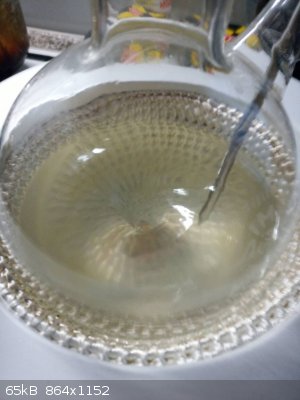
nonetheless the reaction proceeds, here after 15 minutes just before reaching 40 C
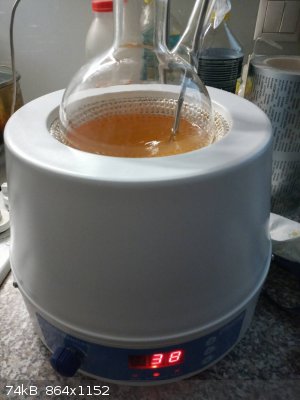
after 90 minutes at 40 C (note it would be very likely better to heat it to 60 C)
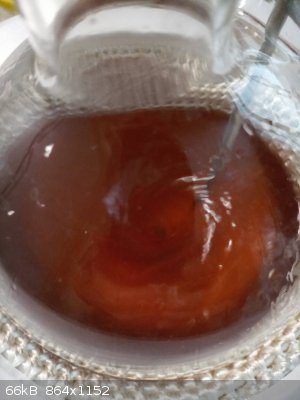
after 90 minutes at 60 C, almost the same color
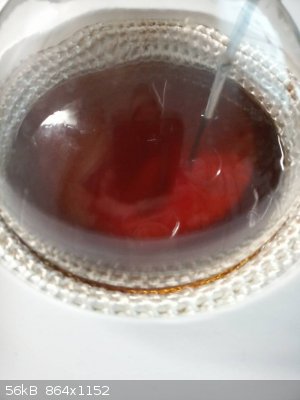
after neutralization with excess concentrated water solution of citric acid
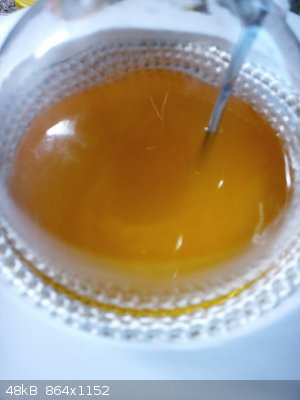
distilling out MEK under necessary magnetic stirring, at the end a cake of Na mono/dihydrogencitrates flying at the surface like a donut
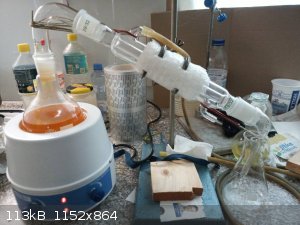 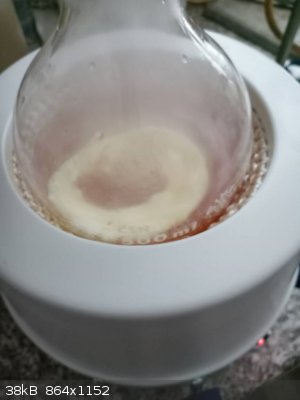
transferred into sep. funnel to be washed with H2O
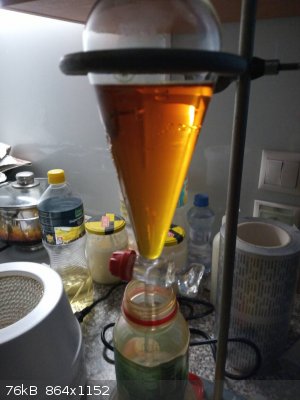
washing 4x with 100 ml water and then dried with CaCl2
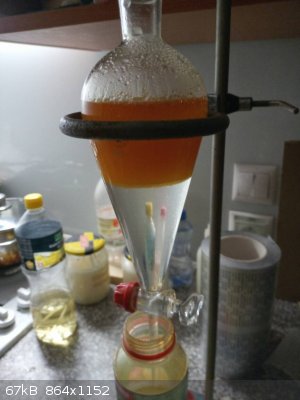
[Edited on 29-11-2023 by Fery]
|
|
|
Fery
International Hazard
    
Posts: 1015
Registered: 27-8-2019
Location: Czechoslovakia
Member Is Offline
|
|
dry crude product going to be predistilled at water aspirator pump vacuum level
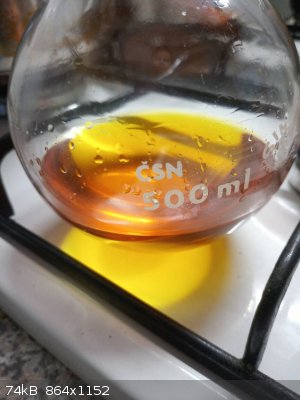
lazy setup for vacuum predistillation at water aspirator pump vacuum level (degassing, removing last traces of MEK and moist), receiving flask
directly connected without messing condenser, receiving flask cooled by a snow
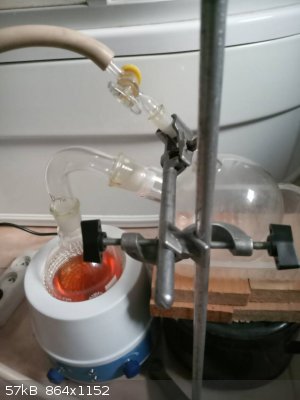 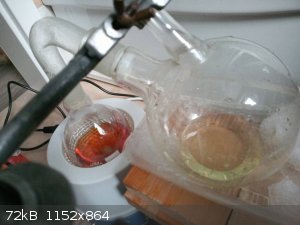
product in the distillation flask after removing lower boiling point contaminants
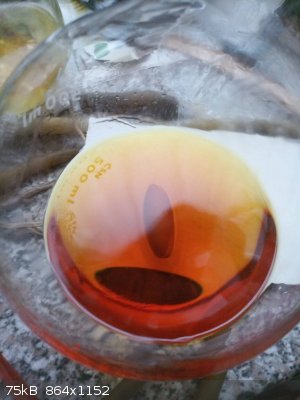
distillate collected, a lot of unreacted citral and few drops of water (weight 40 g)
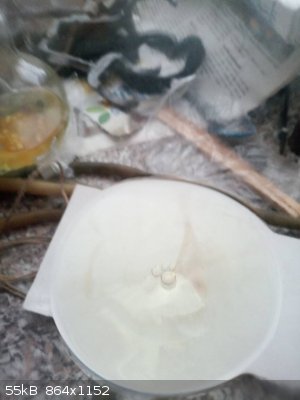 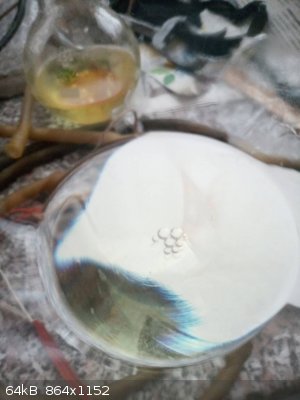
full vacuum distillation using regular setup (also a condenser present)
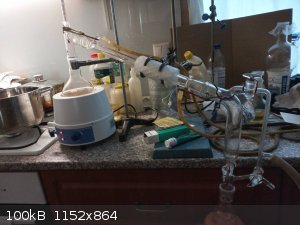
collecting forerun, cca 5 ml (most of the unreacted citral already removed at predistillation at water aspirator pump vacuum level)
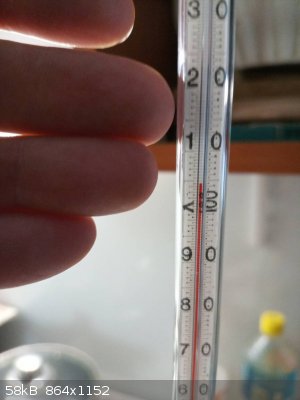 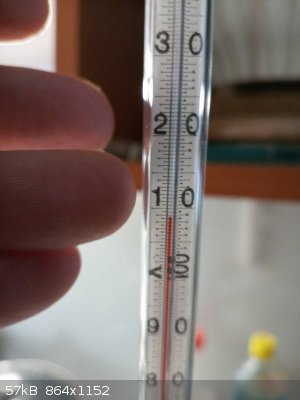 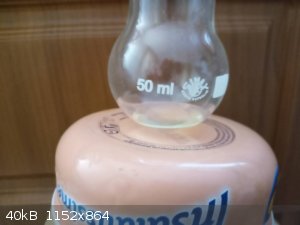
collecting main fraction 112-125 C
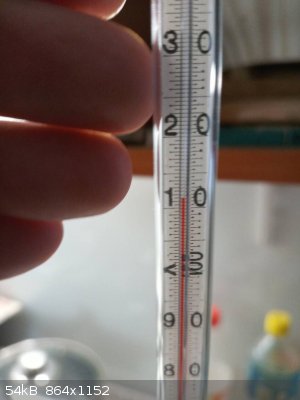 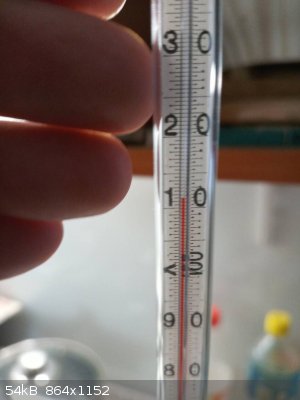 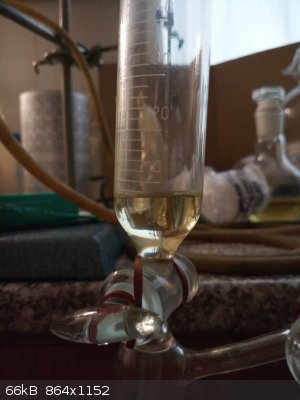 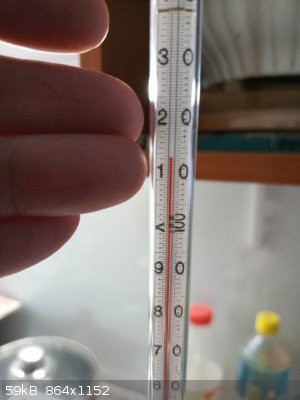 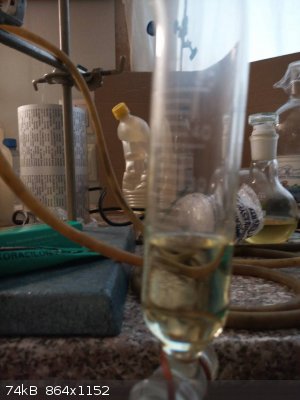 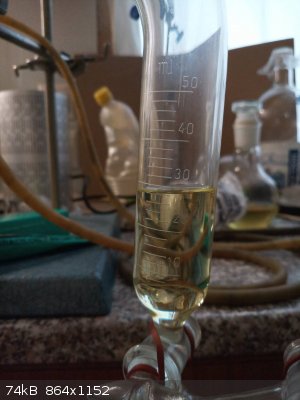 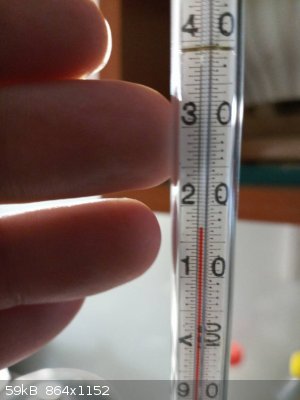 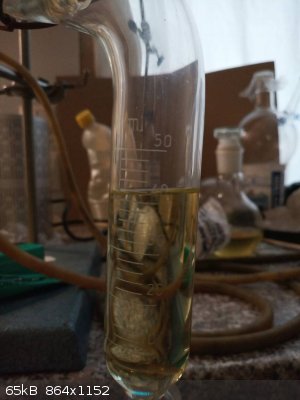 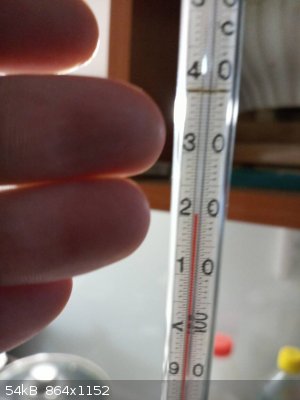 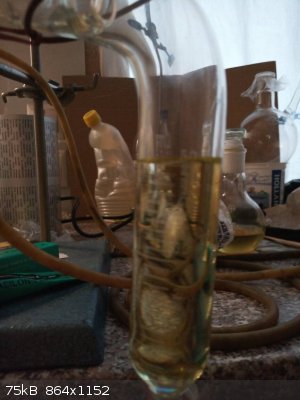 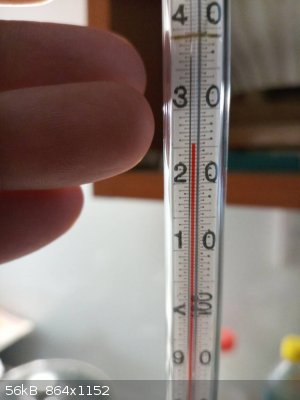
the product is pale yellow (very likely due to conjugated carbonyl C=O group with two C=C double bond groups)
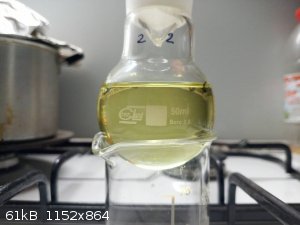
|
|
|
Texium
Administrator
       
Posts: 4579
Registered: 11-1-2014
Location: Salt Lake City
Member Is Offline
Mood: PhD candidate!
|
|
Nice! Do you have any plans to further assess the purity of your product?
|
|
|
Fery
International Hazard
    
Posts: 1015
Registered: 27-8-2019
Location: Czechoslovakia
Member Is Offline
|
|
No way how to assess the purity.
I would like to perform a cyclization in 85% H3PO3 into alfa and in conc. H2SO4 into beta isomethylionone. Just to scent them. Description of their
scents is very variable by different persons (genetic variability, hundreds of genes involved and hundreds of receptors).
https://www.scentree.co/en/Isoraldeine_95%C2%AE.html
| Quote: | | used for reproductions of violet notes, in floral fragrances, in association with rosy or woody sandalwood notes |
http://www.thegoodscentscompany.com/data/rw1594721.html
alpha-isomethyl ionone
| Quote: | | orris woody floral fruit dried fruit violet jammy powdery tea |
http://www.thegoodscentscompany.com/data/rw1045331.html
beta-isomethyl ionone
| Quote: | | woody ambergris waxy orris floral |
https://colognoisseur.com/olfactory-chemistry-ionones-irones...
| Quote: | | Alpha-Methyl Ionone is softer and imparts the powdery quality to iris |
https://basenotes.com/community/threads/difference-between-i...
| Quote: | AJ Dave
Alpha isomethyl ionone smells like alpha ionone, but with the same "woody" smell now being the main smell. It also has a little bit of the the grape
juice and prune juice smell, and also something creamy, almost like whipped cream. It's not my favorite.
Stefan.E
I also have alpha isomethyl ionone, isoraldeine 95 (my favorite). I have similar thoughts as AJ Dave, and Isoraldeine 95 is quite floral to me with
the same ionone violet facet as the alpha. |
|
|
|
Fery
International Hazard
    
Posts: 1015
Registered: 27-8-2019
Location: Czechoslovakia
Member Is Offline
|
|
This is very likely not pseudoisomethylionone but just pseudomethylionone. Comparing with the pseudoionone (citral +
acetone), the extra methyl group of the pseudomethylionone (citral + butanone) seems to be on the "tail" of the molecule, so the "tail" is not
branched. Like the molecule on the picture.
Pseudoisomethylionone = isoraldeine compared with pseudoionone has the same length of the "tail" and the extra CH3 group is attached to the third C of the "tail" part of
the molecule so the "tail" is branched instead of linear. Moreover in the above isoraldeine link page they claim the scent of the alpha
isomethylionone as:
| Quote: | | Floral, Orris, Woody, Powdery |
But I do not scent anything woody after cyclization of the compound I obtained as described in the initial post of this thread. Which is even worse, I
do now have any imagination what does mean "powdery" scent. I'm not any expert in scents, I just like them.
The cyclization product using 85% H3PO4 has very similar scent to alpha ionone so I'm just guessing I got a product which has the linear "tail"
molecule that's without "iso". The branched variant (that's wiht the "iso") should have woody and powdery scent which I do not recognize.
Comparing these 3 compounds:
alpha ionone
| Quote: | | Boiling Point: 237 to 238 °C @ 760 mm Hg |
alpha isomethylionone
| Quote: | | Boiling Point: 232 °C @ 760 Hg |
alpha methylionone
| Quote: | | Boiling Point: 285 to 286 °C @ 760 mm Hg |
The third one which I very likely got after cyclization in 85% H3PO4 (with linear "tail") should have much higher boiling point due to 1 carbon longer
"tail". A similar effect could be observed in b.p. differences between linear n-hexane (b.p. 69 C) and branched isohexanes (b.p. 60-65 C). Here in
isomethylionone / methylionone the difference >50 C seems to be like an error as the difference is just 1 carbon which changed position in 14
carbon molecule which is much smaller change than 1 positionally changed carbon in C6 (iso)hexanes.
Unfortunately I have only 5 ml of both alpha ionone and alpha methylionone which is unsuitable for distillation to measure preciously boiling points.
I do not have such suitable small scale distillation apparatus and filling my smallest 50 ml flask with 5 ml sample is not good idea for precise
measuring b.p. due to overheating walls of almost empty flask. Also the purity of alpha is never so good as purity of thermodymically most stable beta
(it could be like 60% alpha + 20% beta + 20% gamma although according the color obtained it seems not to contain too much beta).
alpha ionone (citral + acetone -> pseudoionone -> cyclisation of pseudoionone in 85% H3PO4)
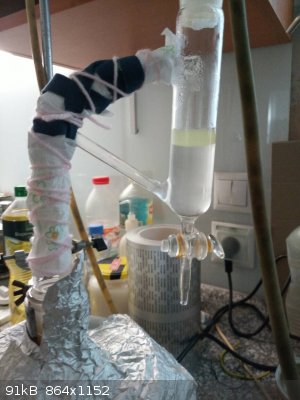
beta ionone (citral + acetone -> pseudoionone -> cyclisation of pseudoionone in 70 wt.% H2SO4 + 30 wt.% acetic acid) much more yellow / orange
due to 2 conjugated C=C double bonds with carbonyl C=O group, it is easy to distinguish beta just due to its color, beta is always the most
thermodynamically stable due to this conjugation, alpha as well gamma could be rearranged easily into beta by an action of conc. H2SO4
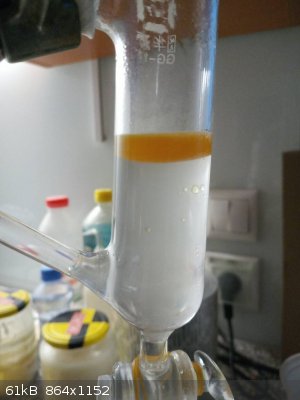
very likely alpha methylionone (citral + butanone (cat. NaOH, elevated temperature) -> very likely pseudomethylionone -> cyclisation of
pseudomethylionone in 85% H3PO4) so this is a cyclization product from the compound dedicated to this thread
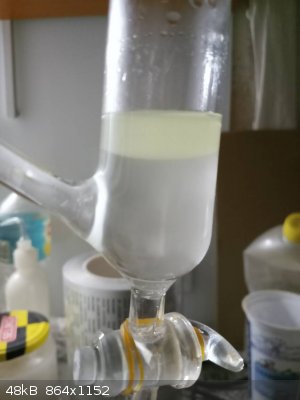
I wonder whether the branched variant, that's "pseudoisomethylionone is obtained at very low temperatures around 0 C using hydroxide
catalyst. Because here they claim that it requires hydroxide + high temperatures
https://www.chemicalbook.com/ChemicalProductProperty_EN_CB51...
| Quote: | Preparation:
By condensation of citral with methyl ethyl ketone controlling the ratio between the n- and iso-forms; the methyl pseudoionone obtained is then
subjected to ring closure, using strong alkali and high temperature (thus favoring the formation of iso-forms) |
But the alkali is used in the first step (citral + butanone) while cyclization (the second step) occurs in strong acids. They very likely posted some
errors.
|
|
|
FM3
Harmless

Posts: 3
Registered: 1-11-2023
Member Is Offline
Mood: No Mood
|
|
I love seeing scent chemistry stuff, it is way overlooked given the fact it is the origin of all organic chemistry as we know it. Thanks!
|
|
|
Fery
International Hazard
    
Posts: 1015
Registered: 27-8-2019
Location: Czechoslovakia
Member Is Offline
|
|
These scents are really beautiful and natural. They are produced in plants and flowers by degradation of carotenoids. Glassware and everything has
this nice scent during preparation and working with them is really pleasure. Everyone in EU can buy cheap citral from es-drei.de and there are
certainly more suppliers in the world. Or at worst obtain citral from essential oil of lemongrass and others. The workup of the first step (aldol
condensation of citral with ketone) requires vacuum distillation or there are also methods using bisulfite adduct or removing unreacted citral could
be also done by steam distillation. I think even if the unreacted citral is not thoroughly removed then during the second step which is cyclization in
conc. H3PO4 or H2SO4 it readily condenses into resinous sideproducts which stay in distillation flask while ionone passes into condensate during
hydrodistillation.
|
|
|
Bedlasky
International Hazard
    
Posts: 1239
Registered: 15-4-2019
Location: Period 5, group 6
Member Is Offline
Mood: Volatile
|
|
If you want, you can send me small samples and I can measure refractive indexes.
|
|
|
|